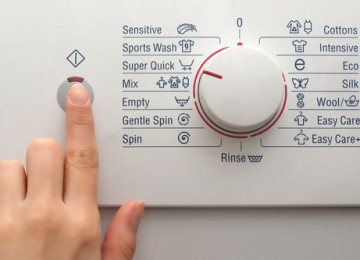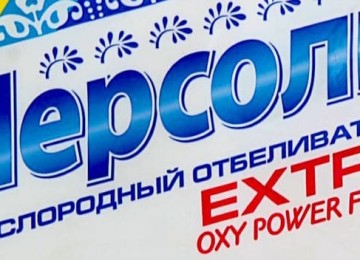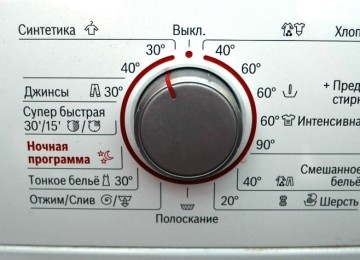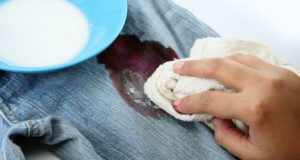 Clothes get dirty quickly, and particularly stubborn stains cannot be removed by washing alone . To make it easier to remove stubborn stains, it is recommended to pre-treat the affected areas. There are universal means and methods for removing specific contaminants.
Clothes get dirty quickly, and particularly stubborn stains cannot be removed by washing alone . To make it easier to remove stubborn stains, it is recommended to pre-treat the affected areas. There are universal means and methods for removing specific contaminants.
Where to start?
The list of potential sources of contamination of clothes and textiles contains hundreds of items. In any case, you need to treat things at home as quickly as possible so that foreign substances do not penetrate deep into the fabric. Fresh stains are much easier to remove than old ones.
Procedure:
- Clothes that can be washed should be soaked in warm water.
- Blood is an exception, here cold water is used, otherwise the protein coagulates and binds even more strongly to the fabric.
- In most cases, it is enough to wash the contaminated item with a strong detergent.
- This method does not work against stubborn stains. You will need to use a product with a bleaching effect.
- In addition to or instead of purchased stain removers, use home remedies to remove stubborn stains.
It is imperative to find out what fibers are included in the fabrics.This is important for color preservation when using oxygen or hypochlorite bleaches. The first should not be used for wool and silk. Manufacturers indicate the composition of the fabric and recommendations for washing and caring for clothes on the label.
The selected stain remover should be tested on an inconspicuous place on the product before treatment. You can rub the inside seam to see how the fabric reacts. If the color does not change, then you can use it.
“Classic” for difficult to remove stains
Some of the most difficult stains to remove are caused by hydrophobic substances (that repel water). The contaminated item is soaked in a cold detergent solution, then washed at the high temperature allowed for this type of fabric.
Oil, fat
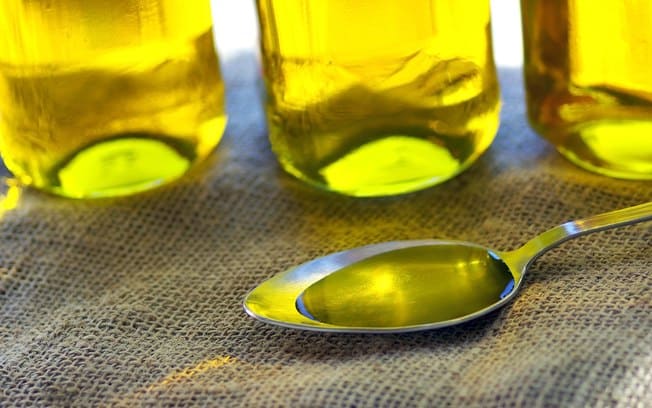
The contamination is sprinkled with starch or talcum powder. After absorbing the fat, the product is cleaned with a soft brush. Repeat the action until the contamination is completely removed. The method works better against small grease stains.
EAnother simple method is to use dishwashing detergent. It is necessary to dissolve 1 tbsp. l. thick gel or paste in water and soak contaminated clothing. After such pre-treatment, wash at the highest possible temperature for this type of product.
More difficult remove fat and oilingrained into the fabric. Treat the contaminated area with mineral water. Next, carefully blot the liquid with a clean absorbent cloth.
Fat dissolves in alcohol.However, it is not advisable to use this ability to remove stains from colored clothing. Ethanol discolors items. It is best to test on an inside seam or hem. If the color remains, you can wipe the stain with alcohol.
Makeup
It is more difficult to remove lipstick from clothing or linen, as it contains fat. Rub a fresh stain with a piece of bread crumb rolled into a ball. The paint will become lighter and will be barely noticeable after washing.
Blood
If the stain has ingrained, it is very difficult to remove. Dried blood can be treated with a thick mixture of baking soda and cold water. Soak only the stained area or the entire item overnight in salted water, then wash. You can wipe with a cloth soaked in alcohol. Remove excess moisture with a paper towel.
Sweat
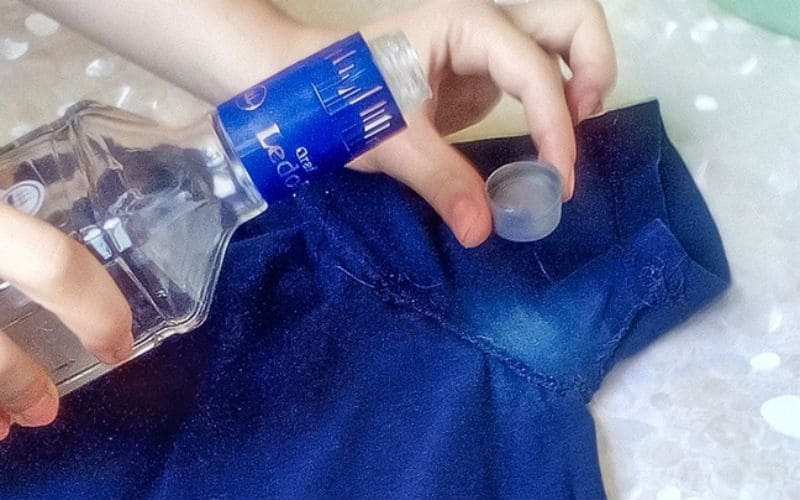
Yellow stains in the armpit area are one of the reasons why almost new things are thrown away. The appearance of persistent yellowing is associated with the release of sweat and the use of a deodorant containing aluminum salts.
Such stains are removed with a solution of citric acid (3-4 teaspoons per 1 liter of water), vinegar essence and water (1:5). To remove such stains from white clothes or linen, use aspirin powder (acetylsalicylic acid). Moisten the product with water, apply as a paste, leave for a while, then wash.
Acids not only remove yellow stains from sweat and deodorant, but also remove the unpleasant odor associated with bacteria and fungi in the skin of the armpits. A freezer helps get rid of the smell of smoke. Leave the smelled item for several hours or overnight. Cold also has an antibacterial effect.
Red wine
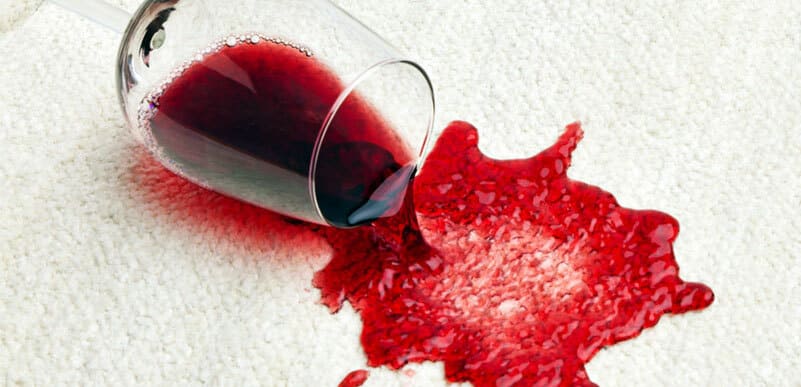
Easier get rid of red wine spilled on clothes or tableclothsuntil it is absorbed.
Removal method:
- Moisten the cloth with lemon juice.
- Sprinkle plenty of salt on top.
- Leave it for the product to take effect.
- Clean off the salt with a brush.
- Wash with mineral water.
Old red wine stains are more difficult to remove. Soak items or textiles for an hour in a solution of washing powder. Rinse in cold water and wash as usual. The same method is used against stains from carrots, tomatoes and ketchup.
Ballpoint pen / felt-tip pen
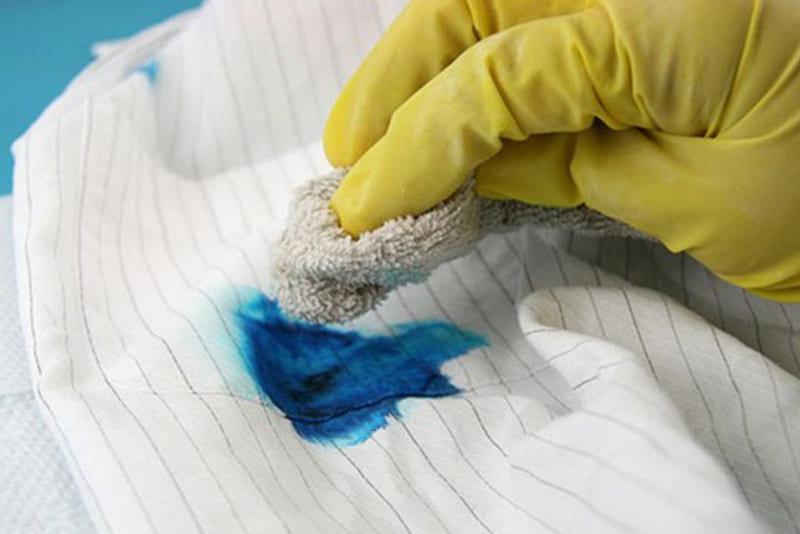
You can remove this type of stain with hairspray or nail polish remover. Use a cotton pad with a small amount of product to wipe the contaminated area. Then clean with a toothbrush and vinegar solution.
If clothes stained with ink, then you can soak it in milk overnight. Another remedy for removing such stains on fabric is lemon. Gently wipe the contaminated area with citrus juice. Ink, felt-tip pen, and ballpoint pen on cotton fabrics are removed with alcohol. Each of these methods works better if the contamination is fresh.
Paint, glue, varnish
If emulsion paint gets on clothing or a textile product, wash off the contamination immediately. After drying, an insoluble crust forms that cannot be removed. The remaining paint is scraped off the surface of the fabric with a blunt object. Soak the item in a solution containing bleaching detergent. Then wash as usual.
Remove glue from clothes with nail polish remover or acetone. Be sure to first check the fabric composition on the label. If acetate and triacetate are included, then these chemicals cannot be used. Then wash as usual.
Dried glue stains are softened with gasoline, alcohol or nail polish remover. Then wipe with a damp cloth. The hardest thing to remove is superglue. If the stain is still fresh, remove it with acetone (not suitable for all fabrics!). The dried glue is moistened with water at a temperature of 70°C, then scraped off with a knife.
Grass
Stains from fresh grass are difficult to remove in water with temperatures below 60°C. You can try smearing it with menthol toothpaste, wait until it dries, and shake it off your clothes. Another way is to wipe the stained area with beaten egg white, then wash. If the stain does not disappear completely, you can treat it with a mixture of vinegar and water.
Helpful tips for removing stubborn stains

Rust is removed by successively soaking the item in boiled cold water, then a solution of alcohol and vinegar (for 10 minutes). The procedure is repeated until the contamination disappears. You can rub salt with lemon juice and leave for an hour for the substances to take effect.
Chocolate stains from children's clothing are removed with glycerin from the pharmacy (it is harmless). Apply the product, let it work for a while, then wash the item.
If the contamination is fresh, then get rid of it using 20% hydrogen peroxide with water (1:5), a mixture of baking soda and water.Coffee is removed with carbonated water, to which a few drops of detergent are added (or foamed with soap).
Stains from red wine, the same color of berries and fruits, are removed with a solution of egg white in glycerin. The ingredients are taken in equal parts. Apply the product and rub in lightly. After a few hours, the item is washed in warm water.
Old stains from berries and fruits first wipe with purified turpentine. Treat with soapy water using a brush, then wash. If the fabrics are colored, then it is better to use a mixture of glycerin and alcohol (2:5).
For particularly stubborn stains, use more aggressive agents
Acetone, trichlorethylene, gasoline dissolve the resin. Benzene, toluene, acetone, turpentine get rid of contaminants containing oil and grease. Moisten a cotton swab with liquid and wipe the stain thoroughly.
Organic solvents often leave a so-called halo on fabric. In order to avoid its appearance, place several layers of cotton wool or gauze under the place on the clothing where the contamination is located.







